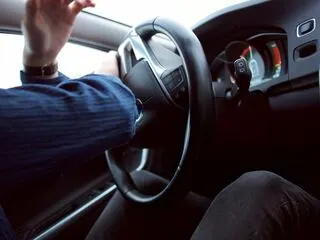Have you ever wondered what the difference is between a crash and an accident? All collision accidents are not considered crashes in legal terminology. Accidents can be unfortunate events, whereas crashes result in damages due to a collision. Therefore, there is a difference between a crash and an accident.
In this article, we will discover the key difference between car crashes and car accidents, and how it significantly impacts Personal Injury Cases. Seek expert legal help for effective resolution.
What is A Car Crash?
A crash is a result of a collision that cannot be stopped. In most car crash cases, the crash is avoidable, but the negligence of the driver contributes to an accident. For example, a driver is driving without following the traffic rules as speed limits. Some of the behavior of drivers that contribute to a car crash is reckless driving, speeding, tailgating, drowsy sleeping, distracted driving, driving in extreme weather conditions, etc.
Car crash examples
There are several examples of car crashes.
- Rear-end collision: when a vehicle crashes into the backside of the other vehicle at a stop signal caused by a failure in stopping the vehicle in time which results in damage to both vehicles and may cause injuries to passengers.
- T-bone collision: this occurs when a vehicle attempts to run the red light and crashes into the side of another vehicle making a “T” shape, which may result in injuries and damage mainly to the passengers on the side which was struck.
- Single vehicle crash: when a vehicle crashes into the trees mainly caused by loss of driver’s control, overspeeding, driver being distracted, or extreme weather conditions.
- Multi-car pileup: when several cars crash into one another due to poor visibility, which sets off a chain reaction of crashes that results in varying degrees of damage and injuries
- Head-on collision: when two vehicles traveling in opposite directions crash into each other’s front, causing significant damage to both vehicles and possible injuries to the passengers
- Intersection collision: when two vehicles crash at an intersection caused due to a driver failing to take the right way or while running a red light.
- Speeding: Cars and other vehicles crash into each other, and heavy trucks in overspeeding and reckless driving accidents.
- Collisions in parking lots: Parking lots are busy spaces, and often drivers crash into the parked car when trying to park their own cars. This is prevalent in spaces where amateur drivers are learning to drive. However, this can also occur with skilled drivers as well.
- Side collision: Two vehicles driving parallel to each other may also collide with each other as a result of some external crash or loss of control by the driver. It topples the other car over, causing serious rollover accidents. In less severe cases, the driver may get whiplashed or the vehicle may sustain a dent or damage.
- DUI-induced crashes: Driving under the influence can result in DUI accidents on busy highways. DUI is a serious offense in many States and can even permanently suspend the license of a DUI driver if they repeat the offense more than thrice. They are also heavily fined.
The examples mentioned above are some of the many types of car crashes that happen on highways in the US. All of the examples stated above have legal implications. It is crucial to contact a crash attorney or a personal injury lawyer to understand your position in a car crash case better.
What is a Car Accident?
A car accident is an unintentional action that may or may not result from the negligence of a driver on the road. It just happens on its own or due to some external factors such as bad weather, colliding with a stray animal on the road, slippery roads, or any other natural causes. Sometimes the drivers also cause car accidents due to their negligence.
Car Accident Examples
There are many examples of car accidents:
- Side glass collision: when the side glasses of two vehicles clip over each other while passing through a narrow route, causing minimum damage.
- Backing out collision: This occurs due to limited visibility while backing out of a driveway, and the vehicle collides with another vehicle
- Parking lot incident: This kind of accident occurs due to a misstep while resemblant parking, and the vehicle collides with the other vehicle causing little damage to the hinder cushion.
- Slippery road plummet: An auto slides on a wet road, makes a turn, and collides with a check. The front of the auto is damaged, but there are no injuries.
- Animal collision: An auto veers to avoid an animal in the road, but collides with a rail. The damage to the auto is minor.
- Hinder end valve: A motorist doesn’t see the auto in a frontal stop at a stop sign, and smoothly gates the reverse of the leading vehicle.
- Tire shindig incident: A motorist gets unforeseen tire shindig and loses control, colliding with a roadside hedge. There are no injuries, but the auto is damaged.
- Parking lot scraping: A motorist’s auto scrapes up against a concrete pillar while trying to maneuver into a narrow parking space.
Crash vs Accident What Sets Them Apart
Legally speaking, the main difference between a car crash and an accident is that an accident doesn’t happen intentionally so that no legal claim can be made in case of an accident. A car crash, on the other hand, has the element of intent to hurt someone’s vehicle or property in it, and in the case of a car crash, felonious charges are applied against the at-fault party.
Why the Distinction Between a Crash and an Accident Is Crucial
In personal injury cases, the distinction between a crash and an accident is crucial because it determines the legal actions the injured party can take against the at-fault party. The element of men’s rea, also known as the intent, plays a critical role in injury cases to determine the extent of liability. Liability is important because it is challenging to ascertain the amount of compensation to be paid without establishing the extent of liability first.
Crash vs. Accident: How Does Compensation Differ?
Compensation for crashes vs. accidents varies for each State in the US. Generally, if a person suffers an accident due to the unintentional yet negligent behavior of another person, the court may impose damages on them. It is done to deter them from repeating the same thing in the future. However, if there is an intent to cause harm and a collision results from a deliberate intent to cause physical, mental, financial, or psychological hurt to another person, then the compensation will depend on the degree of damages suffered by the aggrieved party. The court takes into consideration both financial and non-financial damages when ascertaining the amount of compensation to be paid by the at-fault party.
Post Accident or Crash: A Sequential Checklist for What to Do
The following is a comprehensive checklist for what to do after an accident or a crash:
- Get medical attention.
- Take time to recover. Keep the receipts of all medical expenses
- Gather evidence, CCTV footage, images, and videos
- File a police complaint. Talk to eyewitnesses or try to get the eyewitness’s statement that is available to the police. If you have suffered a truck accident, check the log books and service hour records of the truck driver to see if their negligence has contributed to the accident
- Consult an injury attorney to discuss the merit, scope, and winning chances of your case.
- Write an insurance claim to your insurance company and see if you can settle a compensation claim with them that you deserve.
- Take psychological therapy and consult a mental health practitioner.
To Hire or Not To Hire: Do I Need an Attorney After a Crash or Accident?
Hiring an injury attorney after a car crash or accident is very crucial if you have sustained considerable injuries and they have resulted from the fault of another person. Usually, minor injuries sustained in an accident or a crash can be covered by insurance companies. However, crashes that result in severe injuries, such as temporary or permanent disabilities, are serious injuries. You will need the help of an experienced injury attorney to help you proceed with your injury case and help you win the compensation that you deserve.
The Statute of Limitations for Accidents and Crashes
The statute of limitation for accidents and crashes depends on the legislation of each state in the US. In most States, the injured party can bring an injury lawsuit against the at-fault party within 2 years of the accident or a crash.
There are legal implications of an accident vs. a crash. It is essential to know the difference between the two terminologies so that you are in a better position to understand what are your legal rights in each scenario. Hiring an injury attorney will help you make this distinction. If you have ever suffered a crash, our experienced injury lawyers at Royce Injury Lawyers are here to help you.
- Key Facts About Missouri’s No Pay No Play Law - 28th May 2025
- Understanding Taxes on Personal Injury Settlements - 23rd May 2025
- Navigating Your Rights After a Car Crash While Pregnant - 21st May 2025


